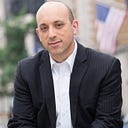Why “Divisive Concepts” Proposals are Having a Detrimental Impact on Education
There is a saying that a good teacher “takes a hand, opens a mind, and touches a heart.” Those of us who, at some point in our lives, have been fortunate enough to have one or more teachers like that appreciate what that means. We also know that laws prescribing for teachers how they must approach challenging subjects do a profound disservice to those good teachers, to the teaching profession, and to our children.
But we see legislative proposals circulating today, already adopted in some states and pending in others, that would place serious limitations on how teachers can talk about racism, antisemitism, and other forms of discrimination in our children’s schools. These laws, broadly labeling programs like anti-bias education as “divisive concepts,” threaten to overly restrict both open dialogue in schools around issues of diversity, and the freedom of educators to guide their students’ learning disconnected from partisan debate.
ADL long has believed that education is the best antidote to intolerance. We know that students in K-12 schools are trying to make sense of the enormous issues of the world and need support. We want students to learn how to speak up and stand up to hate when they see it happen. We want students to appreciate that they have the power to make change. We want students to feel free to be themselves, free of fear of bullying, intimidation or violence. We support students as well as educators, administrators and families across the nation in building inclusive, hate-free educational environments where everyone can be free to learn and grow.
For these reasons, anti-bias education is a hallmark of our work across the nation. We have found it is a critical tool for supporting students in understanding the nature of hate, for helping administrators to build trust within their student body, and assisting communities to understand how best to respond to these incidents when they happen. This content has no political agenda per se. It simply puts in perspective the history of discrimination and how hate escalates when we fail to recognize it.
As one model, ADL uses the Pyramid of Hate to illustrate how unchecked bias can become “normalized” and contribute to a pattern of accepting discrimination, hate and injustice in society. Such acceptance can lead to real-world acts of hate and even violence. While every biased attitude or act clearly does not lead to something as drastic as genocide, large-scale violence always has been preceded by a degree of dehumanization of the “other” and built on the acceptance of attitudes and actions described at the lower levels of the pyramid. One of the world’s most horrific lessons in the systemic escalation of hate is the Holocaust. Put simply, you can’t teach the Holocaust without understanding its origins in unchecked bias and how such hatred then can be implanted in a society.
And yet the rash of divisive concept proposals popping up in different states threaten to derail this process. Whatever their intentions, legislators should not be substituting their judgment for educators. Laws that would constrain or limit instruction in key elements of American history because such lessons might cause students “discomfort” substitute blind allegiance to one set of views — or, equally problematic, knee-jerk opposition to another set of views — for the critical thinking skills our children will need to contribute in a meaningful way to the future of our nation’s democratic system. Most teachers understand that some subjects may cause discomfort and yet, at the same time, appreciate that a comprehensive, well-rounded education requires an understanding of those subjects, taught with reasonable sensitivity and age-appropriateness.
Sadly, these “divisive concepts” proposals are already having a detrimental and concerning impact on how teachers across the country talk about race and racism in their classrooms, if at all. This is reportedly happening, not only in states that have passed or proposed laws, but also having a chilling effect on teachers in other states.
Whether or not it’s the intent, such legislative overreach often divides rather than unites communities. When it comes to bias specifically, we should be teaching young people to challenge not only their own biases, but biases they see in others and in our society. These are themes that should carry through their education from their formative years through more advanced schooling. Education that includes a full appreciation of our history — the good and the bad — is part of a fully formed curriculum.
Much of the public rhetoric has used “critical race theory” as a strawman to stigmatize critically important education programs about racism, bias, and American history. I say it is a strawman, because while critical race theory frequently may be found in a law school’s curriculum, it largely is not present in K-12 schools. To be clear, it certainly is reasonable for parents to ask hard questions about what their children are learning and many appropriately have sounded the alarm on the expanding illiberalism in various spheres of our society, including our classrooms. But many of these legislative interventions will not address this concern. They are solutions in search of a problem.
In these incredibly divisive times, we can and should teach students how to handle hate without politicizing the process. Anti-bias education is an essential element of this work. It can help to foster inclusive school communities which ultimately will benefit everyone, but most of all, our children.
